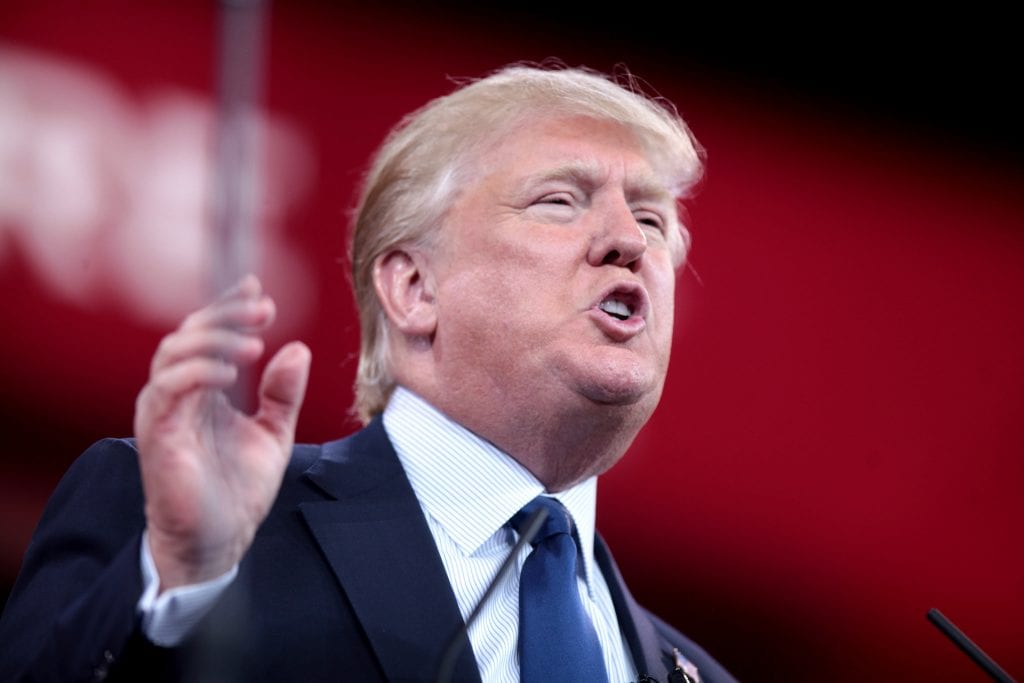Photo Courtesy Gage Skidmore
Today marks the official beginning of America’s 45th president, Donald Trump. Trump’s inauguration brings about some serious questions surrounding the Affordable Care Act.
Congress, with the blessing of Trump, has already made moves that signal, at least some, changes are on the way. While a full repeal may take some time, some estimates have placed it at two to three years; the ACA will likely look differently in the upcoming months.
While it is still the law, (until it isn’t) changes to the ACA will affect millions of citizens and businesses. Here are some possible changes to your healthcare coverage to be on the lookout for in the foreseeable future.
Learn more about 2018 updates to ACA compliance rules here.
1. The Individual Mandate
One of the first pieces of the ACA that are likely to be removed is the individual mandate. The individual mandate required people over the age of 26 to be insured or face a monetary penalty.
This penalty, as of now, is the higher of $695 or 2.5 percent of an annual household income. The idea behind the penalty is that it gets young or healthy people, who typically wouldn’t purchase coverage, to seek medical insurance and avoid the penalty.

If these individuals did not purchase insurance, they would still be buying into the risk pool that helps pay for the coverage of those who are ill or dependent upon health insurance.
Without the mandate, there has been some concern among insurers that there would be little incentive for young people to buy coverage, and balance out the costs of insuring those who are older or sicker.
2. Subsides
Another common thread among ACA-replacement proposals has been the elimination of federal subsidies for purchasing healthcare coverage. These subsidies were designed to make purchasing insurance affordable for low- and middle- income Americans.
The Department of Health and Human Services has claimed that 70 percent of marketplace consumers should be able to get healthcare coverage for less than $75 a month (even with significant premium increases).

Some of the proposed replacement plans involve replacing current subsidies with tax credits. Tom Price’s proposed plan would allow for up to $1,200 for adults and $900 per child.
Paul Ryan’s plan would replace current subsidies would give tax incentives to those who remain insured from plan year to plan year, up to $2,900 per individual and $5,700 per family.
Bill Cassidy’s plan would swap subsidies for plans purchased through an exchange for up to $2,500 for adults and $1,500 per child.
3. Preexisting Conditions
Guaranteed issue has allowed individuals with pre-existing conditions to obtain health insurance. Still, guaranteed issue could be one of the first pieces of the ACA to go.
Many insurers and politicians have expressed concern over how individuals with preexisting conditions have made premium costs rise. Trump wants to create high-risk pools for those with preexisting conditions to limit these costs.

Price and Ryan want to keep the guaranteed issue provision, but only if that individual has remained continuously insured for the previous 18 months. Cassidy’s plan would do the same, but if coverage is stopped that individual must pay the penalty for each month spent without insurance.
4. Children Under 26
Another provision of the ACA requires insurers to cover children under the age of 26 as part of their parent’s plan. None of the proposals put forth by Trump, Price, or Ryan mention this provision.
The plan that Cassidy has put forth; though, would continue required coverage of dependents up to 26 years old.
5. Essential Health Benefits
Again, neither the Trump, Price or Ryan plans include a mention of essential health benefits being a part of the coverage. The Cassidy plan does not require the inclusion of essential health benefits for insurance.
6. Changes for HSAs
Donald Trump has mentioned that he wants to expand the accessibility of health savings accounts, or HSAs. According to our new president, these accounts should be tax-free, allowed to accumulate, and allowed to be passed on to or inherited from family members.
The Price plan would produce refundable tax credits for health insurance premiums and HAS contributions, raise the annual HSA contribution limit, and place a limit on employer’s contributions to health coverage that can be excluded from that employee’s taxable income.

Ryan’s proposed plan would make State Health Insurance Exchanges, which would allow participants to pay premiums through HSA funds without any tax penalties. The Cassidy plan would demand states that use HSA deposit systems to deliver funds into individual HSAs for health-related costs.
7. Medicaid
Many Republican leaders have mentioned they want to repeal Medicaid expansion, which has been a big part of the ACA. Both the Price and Ryan plans would repeal Medicaid from 138 percent of the federal poverty level and return it to 100 percent of the FPL.
Cassidy’s plan differs from these two and would offer optional Medicaid expansion for any states that opted for it.
As of now, there is only one certainty with regards to the ACA; change. Changes are coming to the Affordable Care Act, and it is up to you to make sure you are continuously monitoring for these changes.

